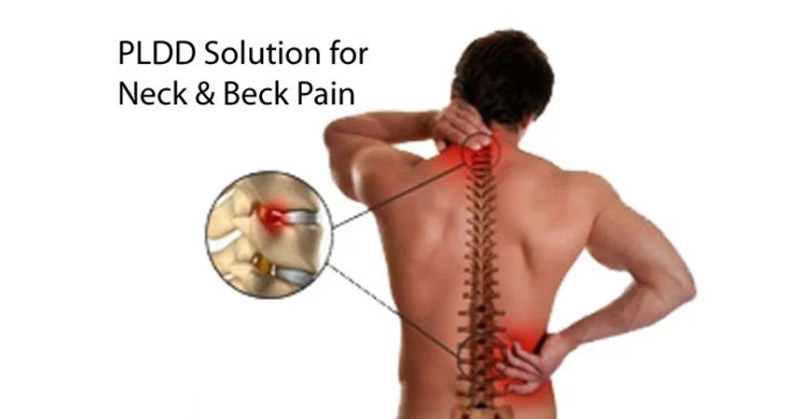
In recent years, medical science has witnessed significant advancements in the treatment of spinal disorders, with Percutaneous Laser Disc Decompression (PLDD) emerging as a revolutionary approach. This minimally invasive procedure has gained popularity for its effectiveness in managing disc-related issues. In this article, we delve into the intricacies of PLDD treatment, exploring its effects, safety, and the Pioon Medical Lasers that contribute to its success.
Percutaneous Laser Disc Decompression (PLDD) is a new method for the treatment of cervical and lumbar disc herniation. The treatment process uses a thin optical fiber to emit pulsed lasers. Percutaneous laser disc decompression uses laser energy to hollow the diseased nucleus pulposus, reduce the pressure in the intervertebral disc, and relieve and eliminate the compression on the sciatic nerve or vertebral artery nerve. At the same time, the stimulation of nerves is increased, thereby improving the blood supply of the vertebrobasilar artery, thereby reducing the compression of the spinal nerve by the herniated disc, and achieving the purpose of treatment.
It can achieve the following therapeutic effects:
1. Use the high-energy local biological effects of the laser, that is, the effects of burning, vaporization, denaturation and coagulation to "remove" the protruding intervertebral disc nucleus pulposus.
2. Reduce the internal pressure of the diseased intervertebral disc, retract the herniated cervical and lumbar intervertebral discs, and relieve the compression of the spinal cord or nerve roots.
3. Restore the normal physiological functions of the human body, and eliminate the symptoms of waist and leg pain, numbness and motor dysfunction caused by the herniated disc of the patient.
Minimally Invasive: PLDD is considered a minimally invasive procedure, meaning it involves smaller incisions and less trauma to surrounding tissues compared to open surgery. This contributes to a reduced risk of complications and a faster recovery.
Low Infection Risk: The risk of infection is minimized with PLDD due to the smaller incisions and reduced exposure of internal tissues to external contaminants.
Patient Selection: While PLDD is generally safe, patient selection is crucial. Not all individuals with spinal disc issues may be suitable candidates for this procedure. A thorough evaluation by a qualified healthcare professional is essential to determine the appropriateness of PLDD for a particular case.
Compared with other cervical and lumbar spine treatment methods, percutaneous laser intervertebral disc vaporization decompression is used in the United States, Britain, France, Germany, Japan, South Korea and other developed countries have become the first choice for the treatment of intervertebral disc herniation.
Pioon M2 surgical laser with 980nm+1470nm is for Percutaneous Laser Disc Decompression. Nowadays, PLDD (percutaneous laser disc decompression) aims at the pathology of intervertebral disc disease and effectively relieves the disease. It is widely used in clinical practice.
Pioon Laser Technology: Pioon M2 Medical Technology is at the forefront of providing cutting-edge laser solutions for medical applications, including PLDD. Their advanced laser systems are designed to deliver precise and controlled energy for optimal results in disc decompression procedures.
Ergonomic Design: Pioon M2 Medical Lasers are engineered with ergonomic designs to enhance user comfort and control during procedures. This ensures that healthcare professionals can perform PLDD with precision and confidence.
Versatility: Pioon's laser systems offer versatility, allowing healthcare practitioners to adjust parameters according to the specific needs of each patient. This adaptability is crucial for achieving optimal outcomes in PLDD treatments.